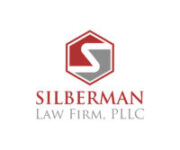
When privately-held business owners want to grow their business, they will often reach out to potential investors, hoping to raise money which will fund that growth. Understandably, investors want to know as much as possible about the business and its financial status before investing. An Offering Memorandum serves the purpose of providing information to potential investors, so that they fully understand the risks and potential returns of their investment.
Information to Include
Because an offering memorandum is often the main source of information for potential investors, it should provide as much information and financial transparency as possible in order to improve the likelihood of investments. Such transparency also protects the business from potential conflict and even future litigation. To maintain consistency and accuracy, the Texas State Securities Board has established rules and regulations that an OM must follow. According to state regulations, the offering memorandum must contain the following information:
- The basics of the business, such as descriptions of the products/services provided, their pricing, and where and how they are produced;
- Information about personnel, including contact information, credentials, and responsibilities;
- Information and shareholders, including the numbers and percentages of shares they own;
- Risk factors, including falling profits, cash flow issues, conflicts of interest with personnel, and market competition;
- Purpose of investment, including a detailed explanation of how and why the money will be spent;
- Financial disclosures, including balance sheets, budgets, cash income and outflow. These disclosures may be audited and must accurately reflect the company’s financial health.
- Return of investment, including stock options, shares, and decision-making ability.
In addition to information about the company itself, the OM must include the subscription agreement, perhaps the most important element of the OM. Like a contract, the subscription agreement explicitly outlines the terms of agreement between the investor and the business and how exactly the money will be transferred to the company. Without the subscription agreement, the OM is simply an exchange of information. The subscription agreement formalizes the agreement between the investor and the company.
Types of Offering Memorandums
One type of OM is the Equity Private Placement OM. The OM offers the sale of shares or warrants by the company to the investors directly. Businesses must be certain that investors are qualified to invest in the company before they invest.
A Debt OM is another option. For this type of OM, the business sells bonds or notes. It must then identify interest rates and maturity dates. If the bonds or notes are convertible, the business must identify the date on which the debt securities will convert to equity.
These types of OMs are not mutually exclusive, and both equity and debt OMs must adhere to state, federal, and potentially international regulations.
Failure to follow securities laws and regulations has serious consequences. Working with a securities attorney is a key step to ensuring a company’s compliance. An experienced attorney will also draft an Offering Memorandum that is clear and compelling, increasing the likelihood of investment and the company’s long-term success.
All information provided on Silblawfirm.com (hereinafter "website") is provided for informational purposes only and is not intended to be used for legal advice. Users of this website should not take any actions or refrain from taking any actions based upon content or information on this website. Users of this site should contact a licensed Texas attorney for a full and complete review of their legal issues.
